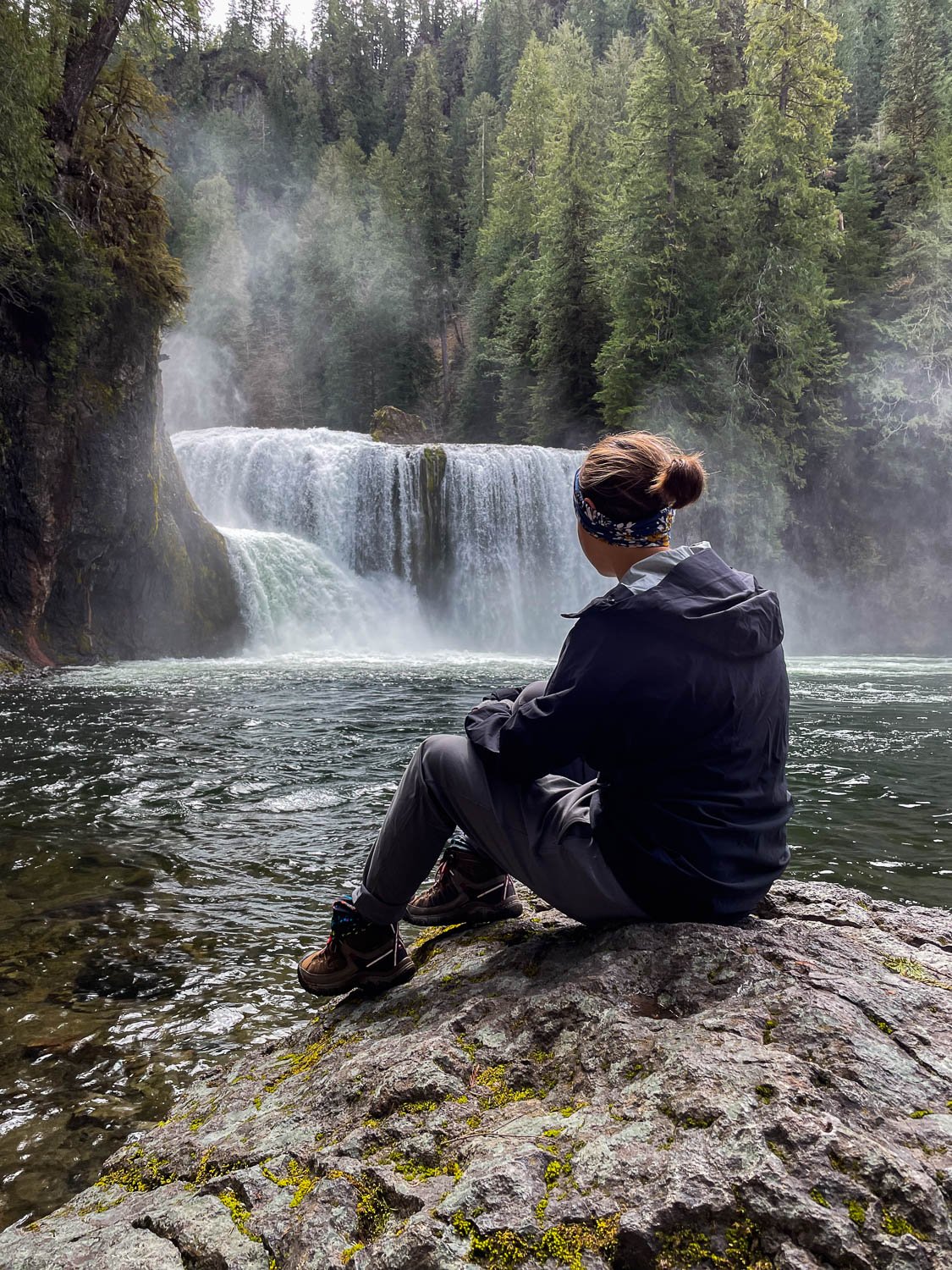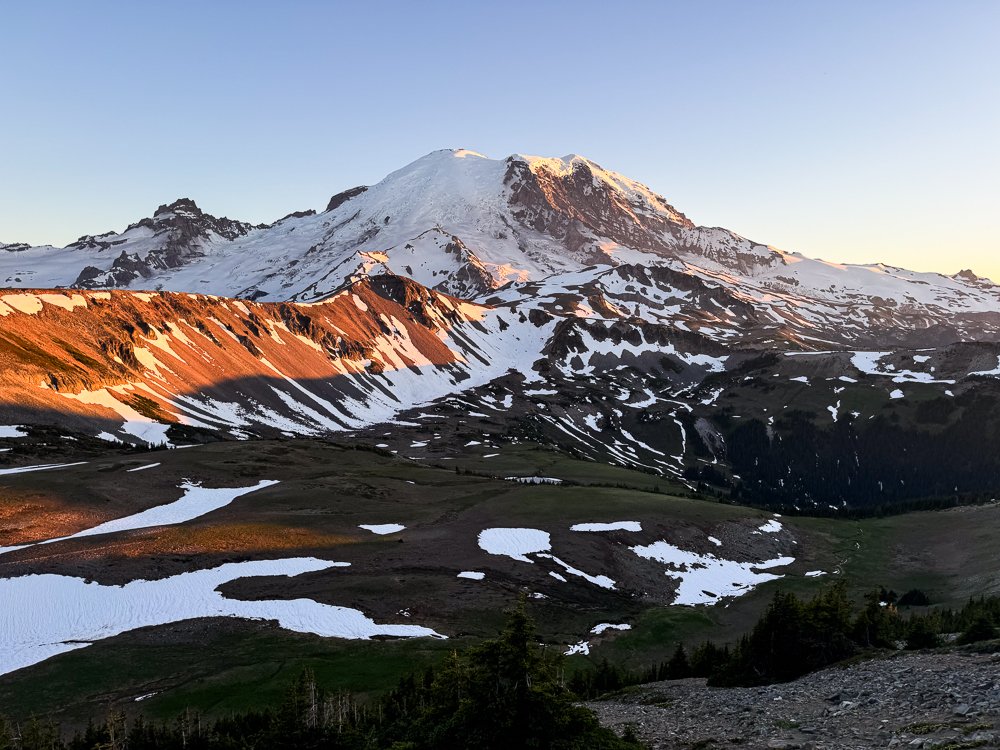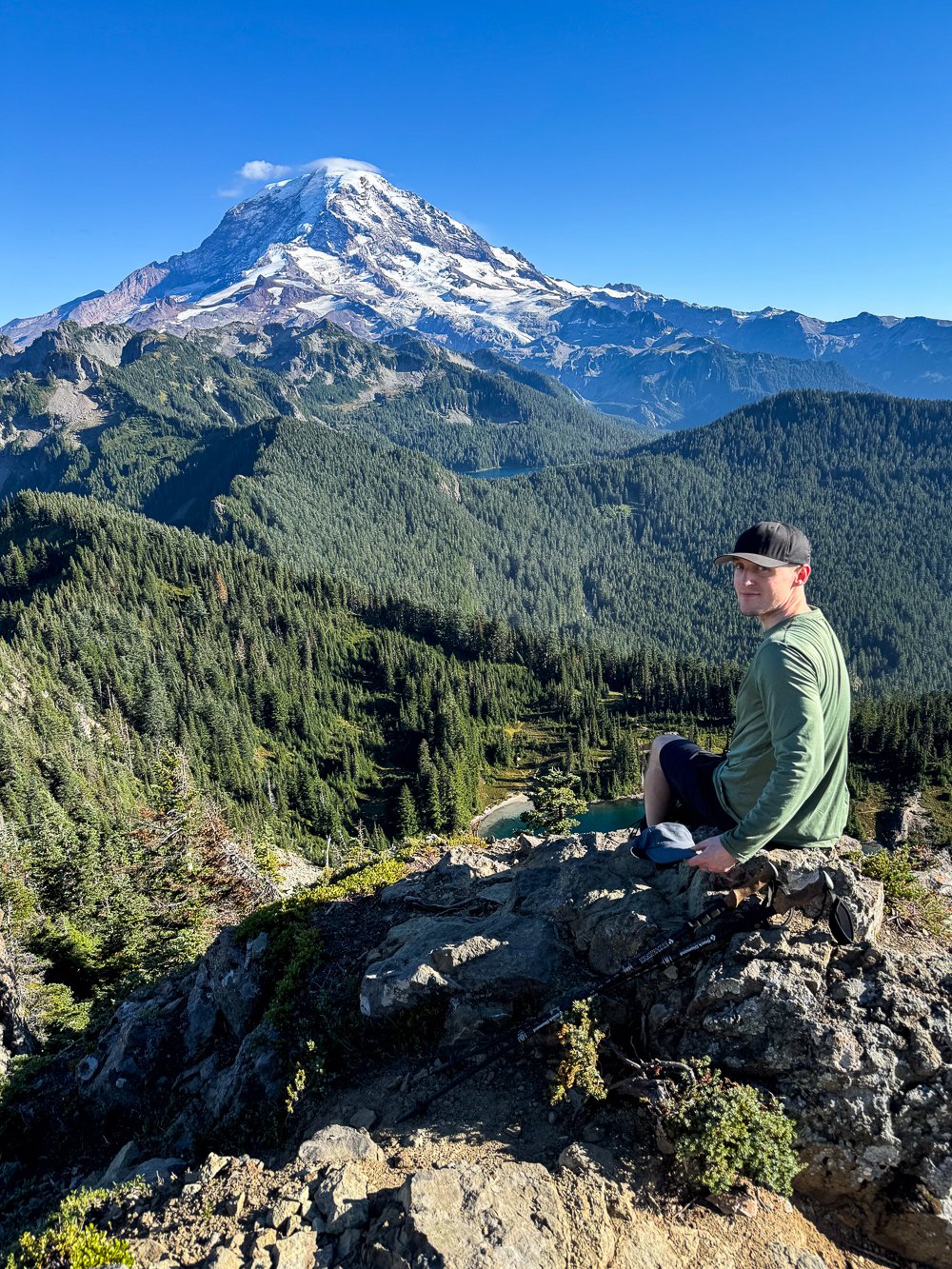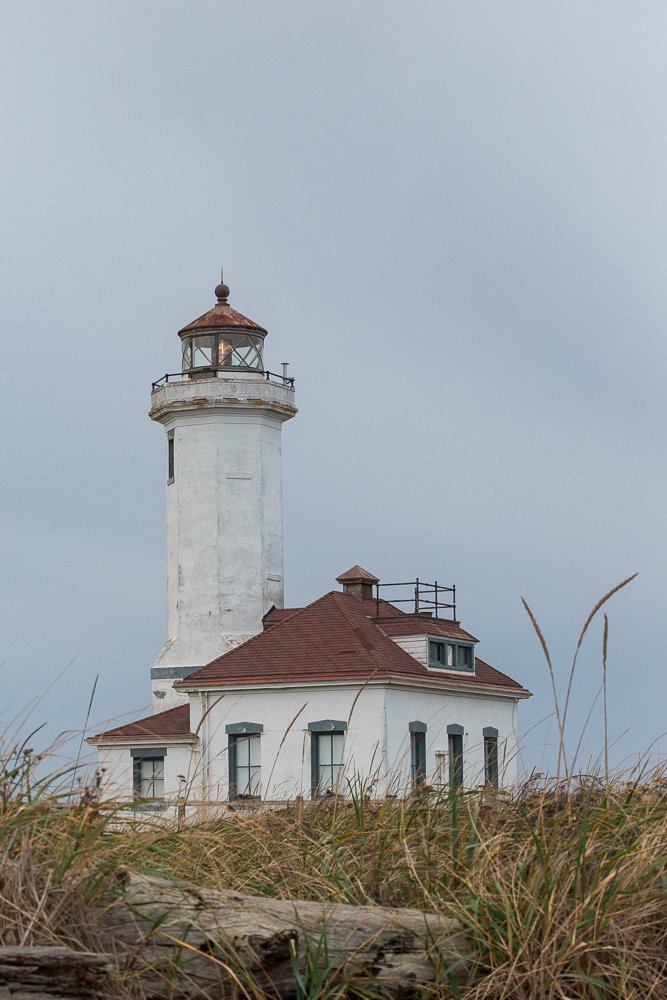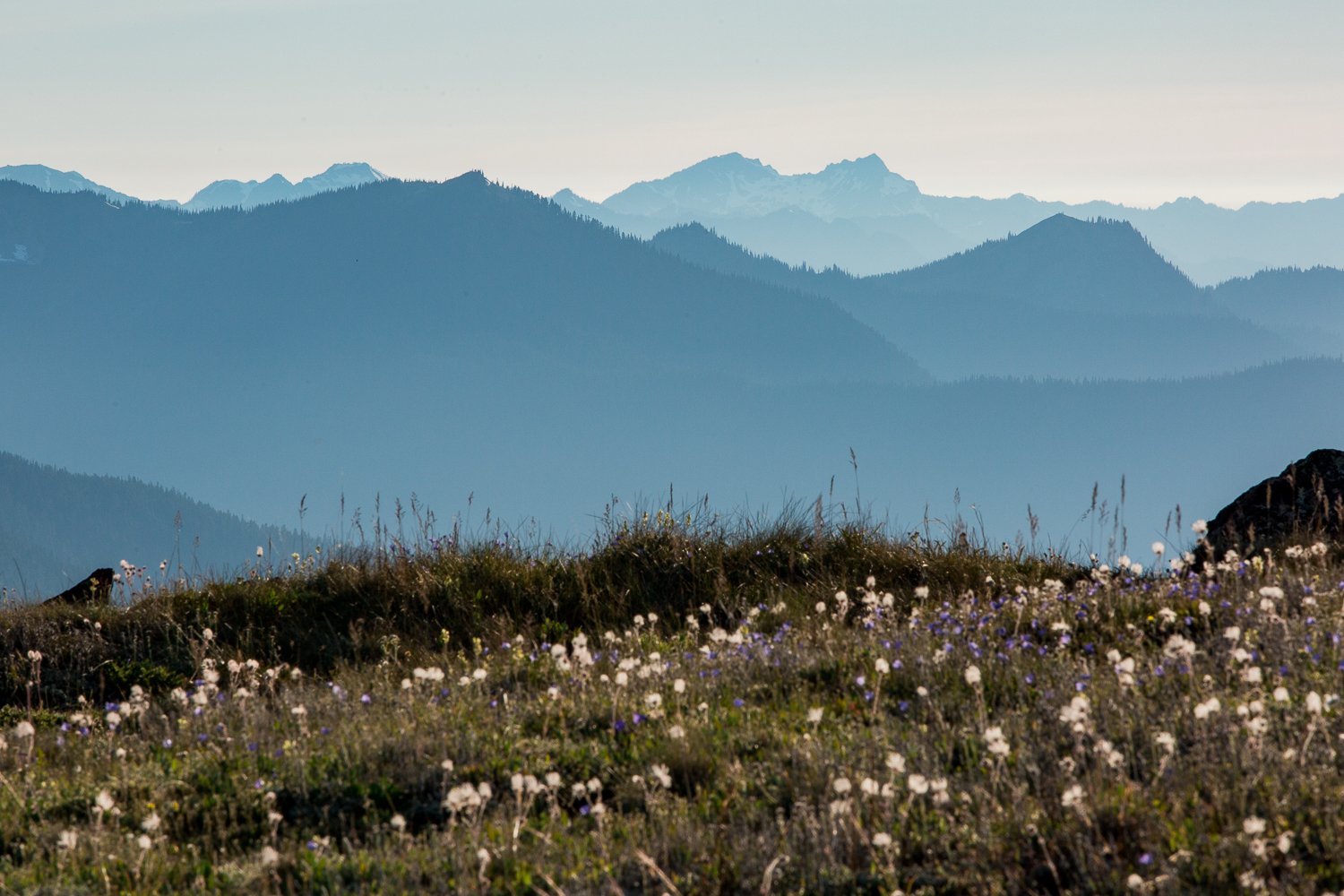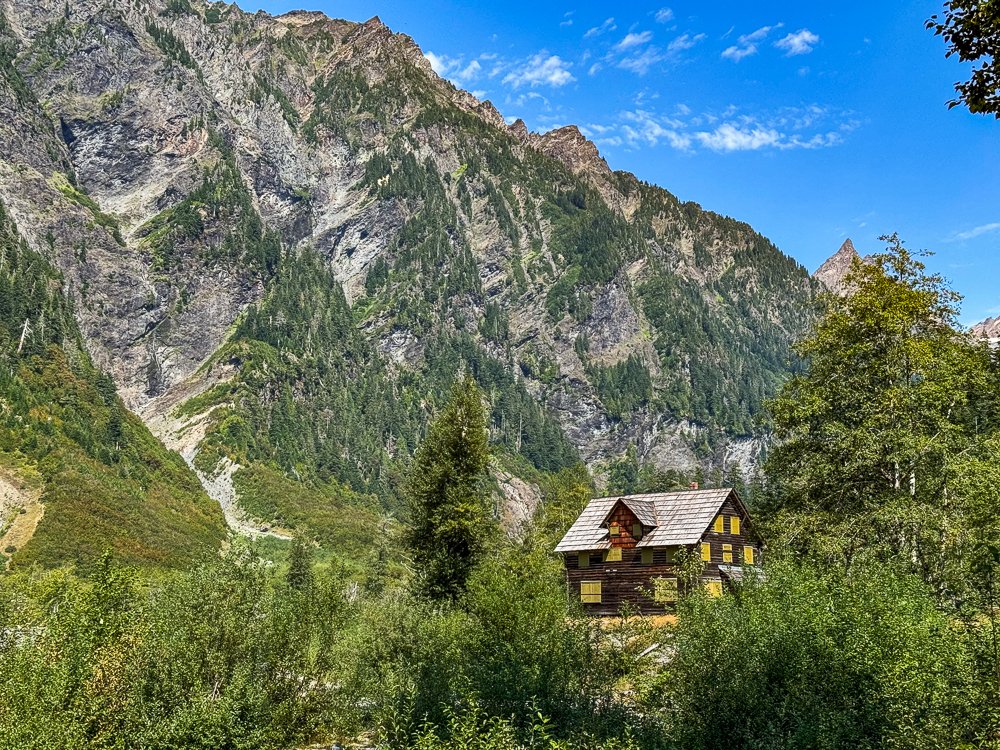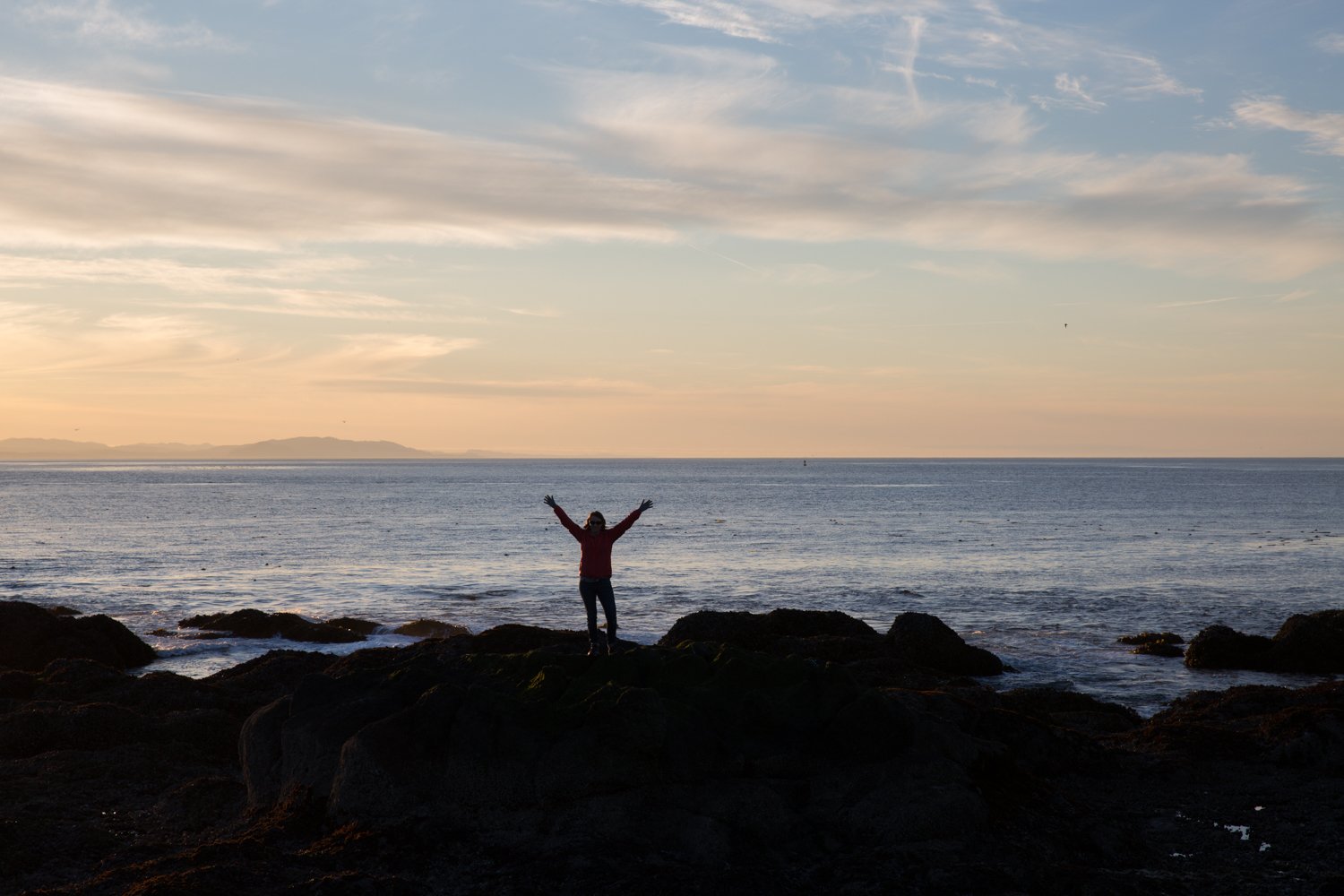Road Trip All 3 National Parks in Washington State
With nearly 100 different ecosystems, Washington is one of the most diverse and interesting states to visit. Its national parks – Olympic, Mount Rainier, and the North Cascades, are three of Washington’s top destinations. This blog covers how to see all the best sights at each park in one trip.
You’ll ideally need ten days to thoroughly explore each park, but cutting it down to a seven-day trip is possible.
Know what you’re looking for? Skip to a section by clicking on a link below.
Driving between national parks
7+ day Washington national parks itinerary
When to visit
Late June to early July
Best greenery
If you’re visiting in late spring or early July, start your trip by visiting the Olympic National Park first. Most of the park is made up of lowland rainforests and beaches which are accessible year-round.
High-elevation hikes in places like Hurricane Ridge, the North Cascades, and Mount Rainier aren’t accessible until mid-July. Visit the latter two parks after mid-July for the best experience.
Merriman Falls – see this on our Lake Quinault waterfall road trip
Mid-July to September
Best weather and hiking
Western Washington has the best weather between mid-July and September. This is also when hikes at higher elevations in the mountains become accessible. If you want to prioritize hiking, this is the best time to visit.
However, this timeframe does overlap with the Pacific Northwest’s wildfire season. Wildfires in British Columbia and the surrounding states affect Washington’s air quality anytime between July and September. When and where wildfires occur is unpredictable and changes every year.
October
Best for fall colors
Late September and October are also beautiful times to visit, but the larches in the North Cascades draw heavy crowds, and Mount Rainier is covered in clouds often the closer you get to winter. With these conditions and unpredictable weather, it’s best to visit these parks earlier in fall. If your visit edges into October, save the Olympic National Park for last – it’s beautiful, although a bit rainy, in fall.
What about the winter months?
Although the Olympics are great to visit year-round, Washington’s other national parks are more seasonal. The North Cascades close each year around mid-November, and a trip to Rainier in the winter will likely leave you disappointed. Rainier also has seasonal road closures (only the Nisqually entrance to Paradise is open) and the mountain is usually covered in clouds. Getting a view of the mountain is unlikely during the winter months.
April at Cape Flattery in the Olympics
Getting to Washington
The Seattle-Tacoma International Airport (SEA) is the nearest largest airport to all three national parks, located roughly two hours away from each.
If you’re on the hunt for a great flight deal, research flying in or out of the Portland International Airport (PDX) or the Vancouver International Airport (YVR) as well. It would be inconvenient to start and end your trip at either of these airports, but they would work well going one way.
Park breakdowns
All three of Washington’s national parks are very drive-heavy parks. They’re large, spread out, and have limited lodging surrounding the parks. Spend more time in any of the parks to spend less time driving, and more time exploring.
Olympic National Park
Plan on spending at least three days in the Olympics. If you can spend more time there, that’s even better because it takes half a day to reach the Olympic Peninsula from Seattle. Our Olympic National Park itinerary includes plans for up to seven days throughout the park.
Elk near Lake Quinault
Mount Rainier National Park
It’s possible to see a good amount of Mount Rainier National Park in one day. However, if you’d like to see more than one area in the park or tackle a longer hike, you'll need to spend two or more days here.
Note, if you’re visiting Rainier between Memorial Day (late May) and Labor Day (early September) you’ll need to account for timed entry reservations. More on that here.
North Cascades National Park
The North Cascades is another park you could speed through in a day. If you’d like to explore longer hikes, it's worth an extra day or more. Check out everywhere you should stop along Highway 20 in the North Cascades National Park here.
Driving between national parks
Plan on taking half a day to drive between each park. Due to heavy traffic avoid driving on I-5 and I-405 between Everett and Olympia as much as possible, as our routes suggest. The map below shows where traffic typically backs up.
Getting back to Seattle
If you’re flying in and out of Seattle, plan on being near SeaTac, the day you fly out. Check to see how long it will take you to drive to the airport using Google Maps’ arrival time feature. The farther from SeaTac you are, the wider this range will be. Plan on it taking the longer time frame to reach SeaTac, just in case.
Parking passes
National Park Pass
You’ll want to purchase the America the Beautiful Pass to cover all your national park entrance fees. It’s good for one year from the month of purchase and it doubles as a National Forest Pass.
Mount Rainier timed entry reservations
If you’re visiting between Memorial Day and Labor Day, you’ll need to account for Mount Rainier’s timed entry reservations. You can either go into the park before 7 a.m. (this is what we recommend), after 3 p.m., or purchase a timed entry reservation. The North Cascades and Olympics do not have timed entry reservations.
Discover Pass
The Discover Pass covers parking in all of Washington’s state parks. They’re $12 for a day pass or $35 for the annual pass. This is the only pass that covers state parks. If you’re visiting Lake Wenatchee State Park or Deception Pass State Park while driving the Cascade loop, you can buy these passes onsite.
Lake Wenatchee
7+ day Washington national parks itinerary
This is the most efficient route to explore all three of Washington’s national parks. We've designed this itinerary to be traveled between mid-July and September, but you can adjust the order you visit the parks if you’re visiting in the spring or fall as mentioned above. The itinerary here is an outline for your trip. You’ll find detailed information on each national park in the linked blogs.
Summer route
Best done mid-July to September
Itinerary breakdown
Day 1: Arrive in Seattle begin driving the Cascade Loop
Day 2-3: North Cascades National Park
Day 4: Take a ferry to the Olympics
Day 5-6: Olympic National Park
Day 7: Drive to Mount Rainier
Day 8-9: Mount Rainier National Park
Day 10: Depart from Seattle
Day 1: Arrive in Seattle and get started driving the Cascade Loop
Drive over Highway 2 on the Stevens Pass Greenway for a scenic drive to Leavenworth. You’ll have optional stops at waterfalls, rivers, and a lake.
A half day in Leavenworth is enough time to explore town, but extend your stay if you’re interested in hiking to Lake Colchuck or doing the thru hike of the Enchantments – a challenging 20-mile hike.
Lake Colchuck
Day 2-3: Cascade Loop and the North Cascades National Park
From Leavenworth, drive two hours north, where you’ll stay in Winthrop. It’s our favorite town in Washington. If you have time, hike one of our favorite trails in the North Cascades.
Views from Sun Mountain Lodge in Winthrop
Spend your third day driving through the North Cascades National Park, stopping to see all the best sights on the way. If you get an early start, you could fit in another hike!
Blue Lake
Spend the night at the base of the North Cascades near Rockport. If you’d rather not spend your day hiking, start your day early to end near Anacortes and visit Deception Pass State Park or Mt Erie instead.
Views from Mt Erie
Day 4: Take a ferry to the Olympics
Enjoy the drive down Whidbey Island to the ferry terminal at Fort Casey. You’ll arrive on the Olympic Peninsula in Port Townsend. Stop for a meal here, or, at the very least, drive through the Victorian-themed town before heading to Port Angeles for the night.
After arriving in Port Angeles, go to Hurricane Ridge if it’s clear out (if you can’t see the mountains from town, check the visitor center’s webcam to see if they’re visible above the clouds) or Tongue Point at Salt Creek Recreation Area for sunset or low tide if it’s not.
Day 5-6: Olympic National Park
From Port Angeles, do “Day 2: Port Angeles to Forks” from our Olympic National Park itinerary and check out Lake Crescent, Madison Falls, and Sol Duc before arriving in Forks.
On your last day staying in the Olympics, we recommend doing “Day 3: Rainforest and beaches” of our Olympics itinerary. Here you’ll get to see the infamous Hoh Rainforest and explore great beaches to go tide pooling at.
Ruby Beach
Day 7: Drive to Mount Rainier
Mileage: 211 miles
Drive time: 4 hour and 20 minutes
Start: Forks
End: Ashford
Depart from Forks, following our “Day 5: Beaches and Lake Quinault” Itinerary. You’ll see Ruby Beach, the Tree of Life at Kalaloch, the Lake Quinault rainforest and lodge, and Merriman Falls before leaving the Olympic Peninsula.
Be warned, the drive between Montesano and Eatonville is rather dull compared to what you’ll have seen in Washington by now. Brighten up your drive by calling in an order at Ranch House BBQ after you pass by Elma. Their BBQ is incredible, but there is always a 30+ minute wait to be seated. Don’t wait, place an order to go!
You’ll end your drive at the base of Mount Rainier in Ashford. If you do everything as we described, you won’t have time to explore Mount Rainier tonight. Instead, visit the Copper Creek Inn, Wildberry, or the Ukrainian Cuisine Restaurant for another great meal.
Day 8-9: Mount Rainier National Park
Spend your first day at Rainier doing “Day 1: Ashford to Packwood” of our itinerary, ending your day in Packwood. You’ll see three waterfalls, wildflower fields at Paradise, and of course, stunning views of Mount Rainier.
Golden Gate Loop/Skyline Trail
On your second day at Rainier, start early and do “Day 2: Sunrise Visitor Center” of our itinerary to see Tipsoo Lake and hike at the Sunrise Visitor Center. End your day in Greenwater or head to Seattle if you’d like to be closer to the airport.
Day 10: Depart from SeaTac
Lodging details
Day 1: One night in Leavenworth
Day 2 and 3: Two nights in Winthrop
Day 4: One night near Rockport or Anacortes
Day 5: One night in Port Angeles
Day 6: Two nights in Forks
Day 7: One night in Ashford
Day 8: One night in Packwood
Day 9: One night in Greenwater or Seattle
Lodging recommendations
Olympics:
Rainier:
North Cascades:
How to modify this itinerary
You have less time
If you have less than ten days to visit Washington, we suggest subtracting one day from each national park as needed. You can do this trip in as little as seven days.
What if you don’t have time to visit all three parks?
If you only have time to visit two national parks in Washington, we suggest deciding which two parks to visit by these factors: The scenery you’d like to see most or the season of your visit.
If you’re hoping for a diverse range of scenery, combine a visit to the Olympic National Park with either Mount Rainier or the North Cascades to get a huge variety of scenery. However, it’s worth noting the Olympics can easily be made into a longer trip by itself any time of year. If you can visit Washington again, consider saving it for a future date.
Lake Crescent in the Olympics
If you’re visiting between mid-July and September, this is when the North Cascades and Rainier are best. Since their best visiting seasons are much shorter, it makes sense to check off these two national parks from your list during these months. The scenery will be a bit less varied, but ideal for mountain lovers and hikers.
Comet Falls at Rainier
You have more time
You can either extend your time in each national park (see the linked itineraries above for each park) or explore great towns and areas between the parks.
Extend your stay near the North Cascades
Leavenworth
We’ve already recommended staying one day in Leavenworth, but it’s a great place to stick around and explore! The town is full of shops, the surrounding area is beautiful, and there are a ton of outdoor activities here. If you’re feeling up for an extreme hike, thru hike the Enchantments. If that’s too much, hike to Colchuck Lake or float the Wenatchee River for a more relaxing day.
Enchantments thru hike
Stehekin
Stehekin is located on the southernmost edge of the North Cascades National Park. It’s only accessible by ferry, foot, or plane so it’s very remote. Once there, unplug, bike around town, and grab goodies from the bakery! This blog describes how you can backpack there but it also has ferry details and activities to do in town.
Mount Baker Wilderness
If you love the look of the North Cascade mountains, consider adding on a side trip to the Mount Baker Wilderness. The Mount Baker Highway is one of Washington’s most beautiful drives with incredible hiking opportunities. Stay in Glacier to be near the Mount Baker Wilderness or make a long drive from Rockport or Anacortes.
Table Mountain
San Juan Islands
The San Juan Islands aren’t far from the North Cascades, either. Reserve your ferry ride from Anacortes in advance and enjoy the best of island life in the PNW. This is the best place to go on whale-watching tours in Washington!
Extend your stay near the Olympic National Park
Port Townsend
Port Townsend is an adorable Victorian-themed town on the northwest edge of the Olympic Peninsula. If you’ll be ferrying to or from the North Cascades to the Olympics, this is where you’ll ferry from. Stay here to explore a historic World War II Fort or take a bioluminescent kayaking tour with the Olympic Outdoor Center in Port Gamble.
Fort Worden
Victoria, BC
Bring your passport to ferry to Victoria, BC from the Olympic Peninsula. The town is walkable, but bringing your car would allow you to explore more of the island.
Extend your stay near Mount Rainier
Mount St. Helens
Did you know Mount St. Helens is the Cascades’ most active volcano!? The area is full of interesting hikes, activities, and caves. Our favorite thing to do though? Summiting Helens! It’s possible to hike to the top (by permit) without any technical climbing experience.
View of Mount Adams from the climb on Mount St. Helens
Oregon
From Packwood, you’re two hours and thirty minutes from Portland. Check out the waterfall corridor on the Columbia River Gorge or head to the coast to visit Oregon’s best beach towns.
Extend your stay in Seattle
Of course, you can also extend your time in Seattle. If you haven’t visited Pike Place Market yet, we think our DIY food tour is a must-do!
What to pack
You can our Pacific Northwest packing list here. You’ll notice we emphasize having a raincoat and layers. Raincoats are not only great for the rain, but also the wind. Weather can change very quickly in the mountains and on the coast, so having layers that are easy to add or remove is essential.
If you’ll be hiking, check out what we pack for hiking here. We recommend prioritizing getting a good pair of waterproof boots. Muddy trails are common!
Leave no trace
Washington's national parks have highly sensitive ecosystems so it’s important to follow the Leave No Trace Principles throughout your visit. While hiking, stay on the trails, don’t cut switchbacks (this erodes the trails), and pack out anything you pack in. Thanks for helping keep Washington beautiful for years to come!
Search the blog for more adventures! Try searching for topics such as “hiking”, “waterfalls”, or “Oregon”.





























